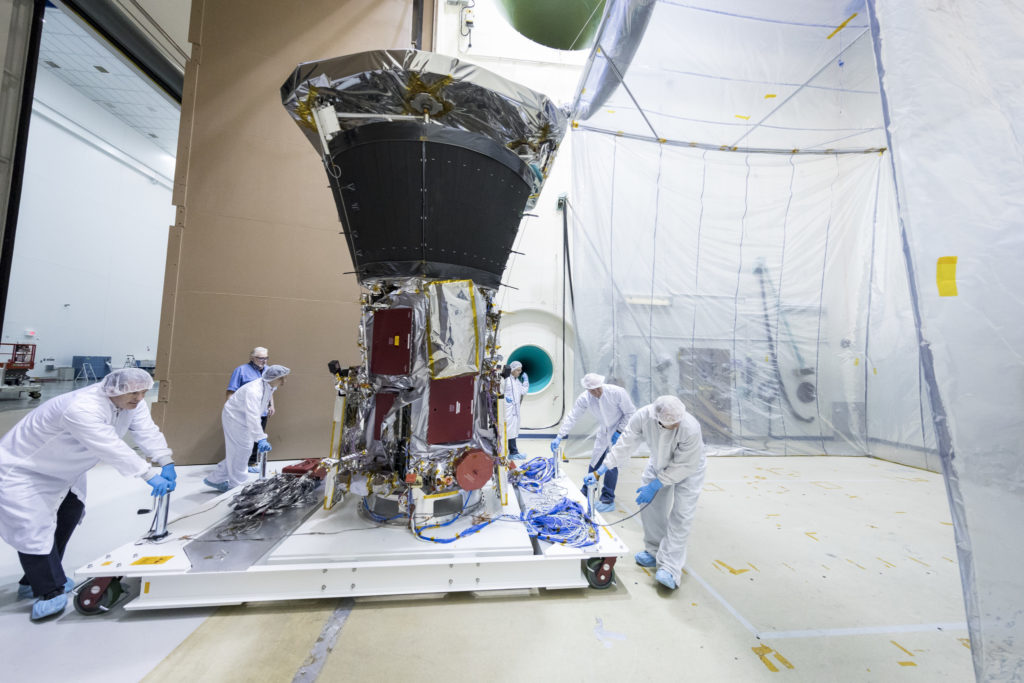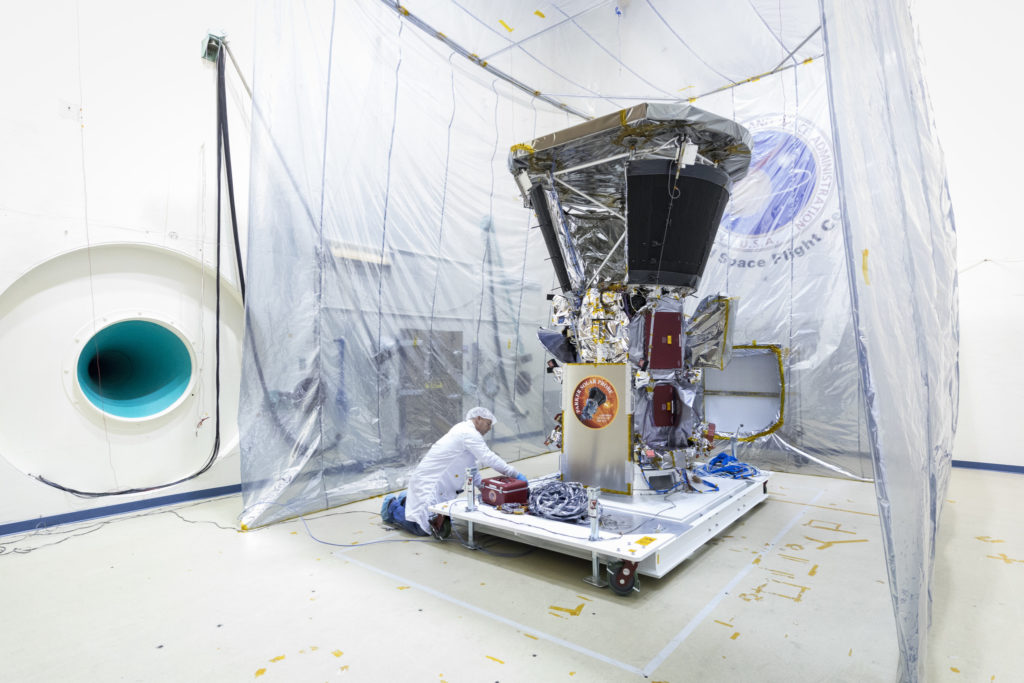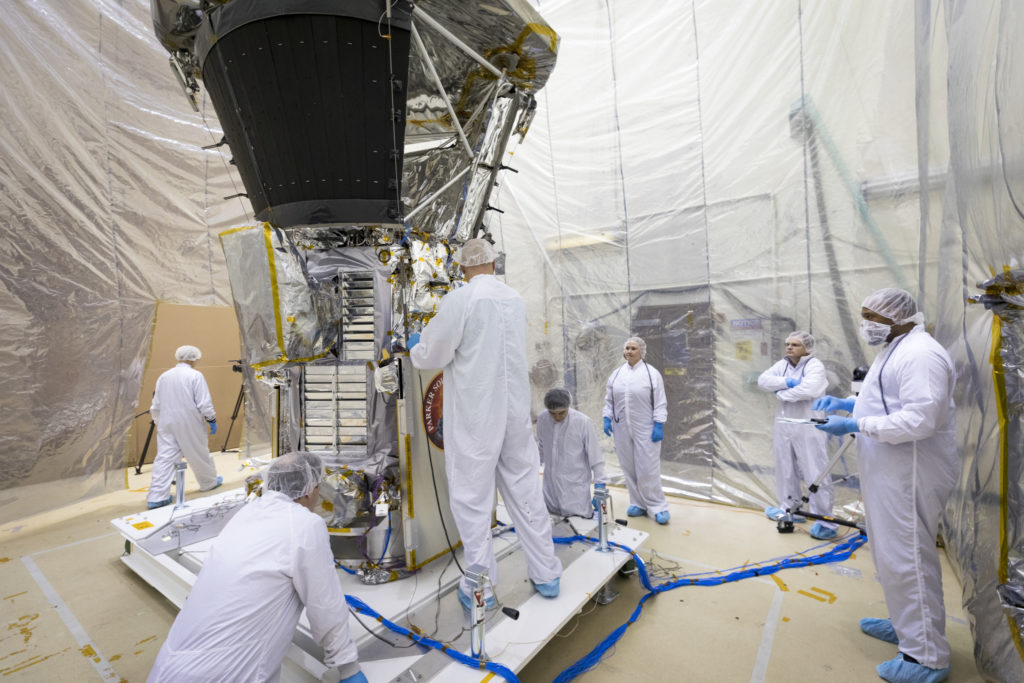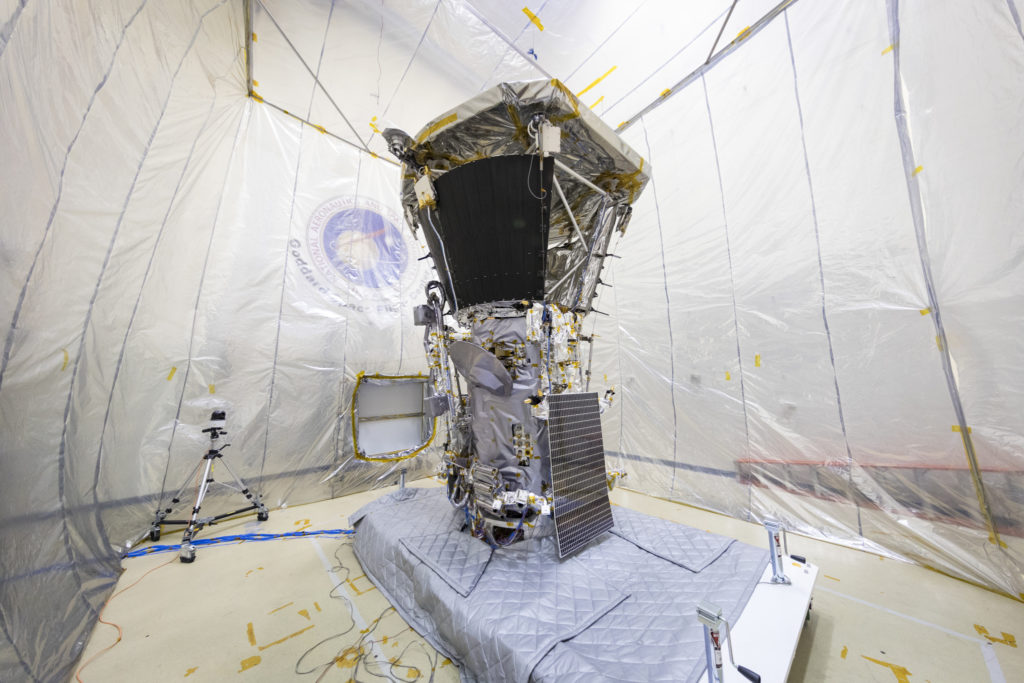When NASA’s Parker Solar Probe lifts off on top of a Delta IV Heavy launch vehicle in summer 2018, it will undergo both intense vibration from the physical forces of the rocket engines, as well as acoustic effects from the sound of the engines and the rocket going through the atmosphere.
Verifying the spacecraft and its systems are ready for the rigors of launch is one of the most important parts of testing. On Nov. 3, Parker Solar Probe passed vibration testing at the Johns Hopkins Applied Physics Laboratory, or APL, in Laurel, Maryland, where it was designed and built. On Nov. 14, the spacecraft successfully completed acoustic testing at NASA’s Goddard Space Flight Center in Greenbelt, Maryland, and is now being prepared for further environmental tests.
Goddard’s Acoustic Test Chamber is a 42-foot-tall chamber that uses 6-foot-tall speakers –which can create sound levels of up to 150 decibels – to simulate the extreme noise levels of a rocket launch. While vibration testing focuses on how much the spacecraft will shake during launch, acoustic testing subjects the probe to intense sound forces, like those generated by the Delta IV Heavy. Each type of force affects the spacecraft differently, so both tests are necessary.
“We’re launching on a very large and powerful vehicle, so we need to make sure that the spacecraft, its systems, and its instruments are going survive the launch environment,” said Shelly Conkey, a Parker Solar Probe structural analyst at APL, who led the acoustic test. “We use our data models to predict the forces that will be impacting Parker Solar Probe, and by comprehensive monitoring of the spacecraft during testing, we can ensure that we’re ready to move on to thermal vacuum testing.”
Parker Solar Probe spacecraft will explore the Sun’s outer atmosphere and make critical observations that will answer decades-old questions about the physics of stars. The resulting data will also help improve how we forecast major eruptions on the Sun and subsequent space weather events that can impact life on Earth, as well as satellites and astronauts in space. The mission is named for Eugene N. Parker, whose profound insights into solar physics and processes have helped shape the field of heliophysics.





